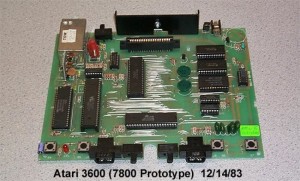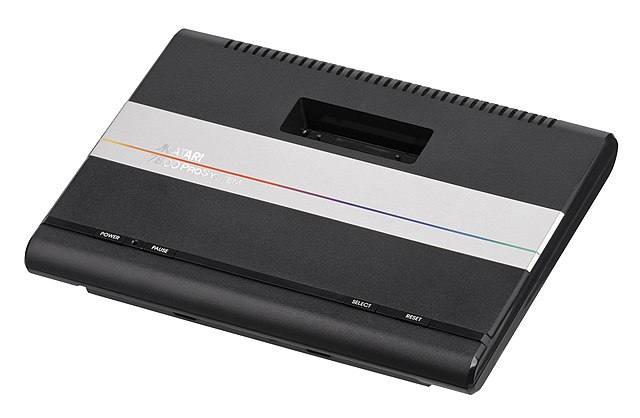In 1983, Atari faced increasing pressure to prove that as pioneers of the gaming industry, they were still the best in the business.
Their less-than-successful 5200 was criticized for needing an adapter to play its predecessor's vast library of games, and its awful
controllers didn't make the console any more appealing. After interviewing loads of gamers, Atari had enough information to design
the "ultimate video game system". But they were losing faith in their internal programmers (maybe after trying to develop games for
the Video System X), so they asked renowned arcade game developer General Computer Corporation to work on the console.

Codenamed the 3600, it used a slightly customized 6502 CPU called the SALLY chip and a new graphics chip called the MARIA. But more
importantly, to allow out-of-the-box compatibility with 2600 games, they reused its TIA chip, sacrificing some of the graphical and
sound capabilities it could've had out of the box.
Atari instructed GCC to implement a lockout system into the console and game cartridges. This would relegate playability only to the
games of companies they trust are of a certain level of quality.

In addition, they proposed peripherals such as a computer keyboard, high score save cartridge, and even a LaserDisc interface for the
new console.
By June 1984, the Atari 7800 was ready, and the first units were shipped throughout California. Enter Jack Tramiel, founder and CEO
of rival Commodore. He had just resigned to start a business called Tramiel Technology Ltd. He bought out Atari's consumer division
from owner Warner Communications on July 2. However, due to issues arising from the 7800's development and his decision to focus on
computers instead of game consoles, he ordered a pause on the manufacture of new units, and the rest of the 1984-made units just sat
in a warehouse. An issue from development involved Tramiel and Warner Communications engaging in a long debate over who would pay GCC
for the design of the console and MARIA chip, ending with Tramiel's relent in May 1985. But things would take another interesting
turn that year...

The New Kid on the Block
In the United States in October, some trading card company called Nintendo released the Nintendo Entertainment System. With clever
marketing tactics, brand-new memorable games, and superior graphics and sound to other consoles, its sales went through the roof and
consumers' interest in video games was restored! So, determined to capitalize on the hype, Tramiel ordered the manufacture of more
7800s and shipment of the warehouse-stranded units everywhere else in the USA in May 1986. Unfortunately, it was too little, too
late. The NES already sold hundreds of thousands and Sega's Master System was soon to come out. The 7800's inferior sound and
graphics was only one reason it failed. Another was getting games for it. Atari had little third-party support aside from
establishing a deal with GCC for 12 games by November 1985, but of course they were already partners in console development. The low
marketing budget didn't make the 7800 known enough to reap more support, part of why most of the 58 games on it were made by Atari
and few were made by someone else. Most were arcade ports, which although they were good, people were sick of these games and wanted
to see more new and original franchises. On the other hand, Nintendo took this to heart and brought out Legend of Zelda, Kid Icarus,
and even built upon arcade franchises like Mario Bros. with Super Mario Bros. They also had a strict rule that developers could not
make games on any other system for two years to reduce competition, directly harming Atari in that regard. This worked great for
Nintendo, and they reigned the market with Sega in distant second. All told, Atari fell from top to near the bottom in only three
years! All products being sold at the time were discontinued when this original incarnation of Atari closed down on January 1, 1992
after almost 20 years in business.



